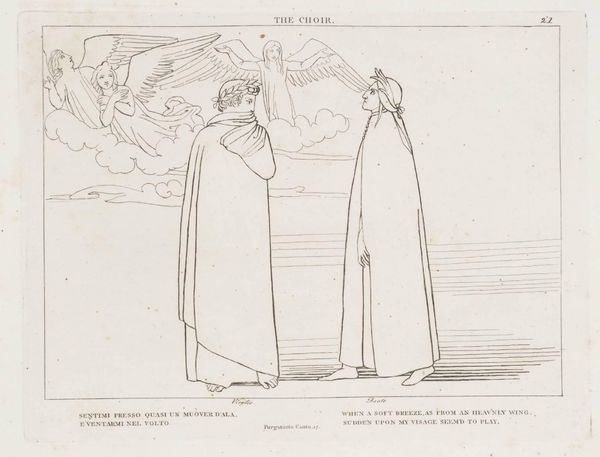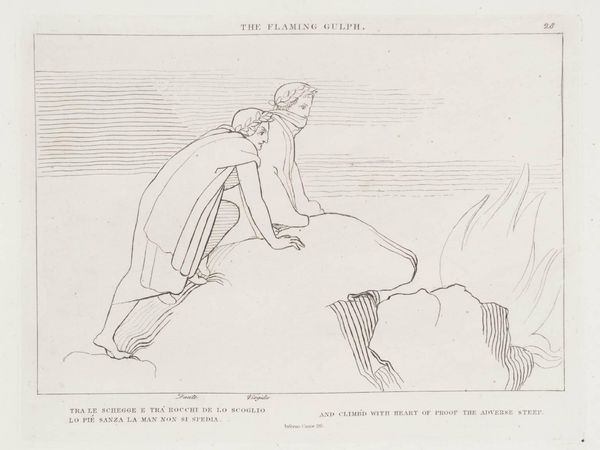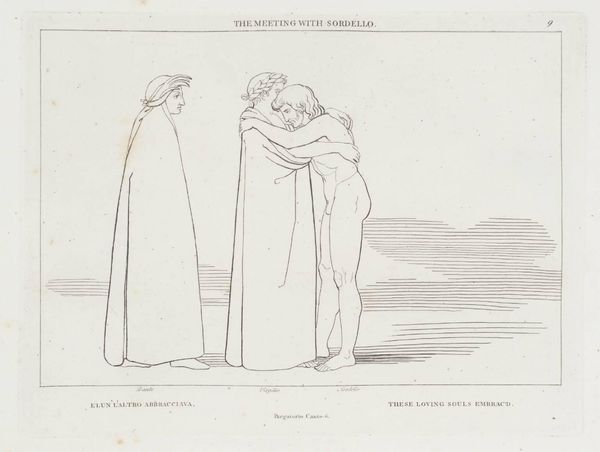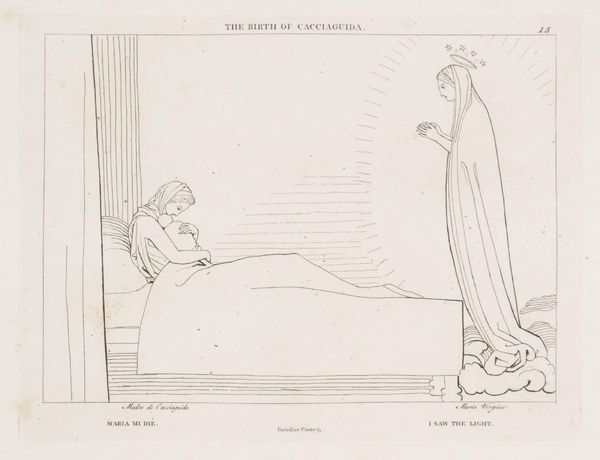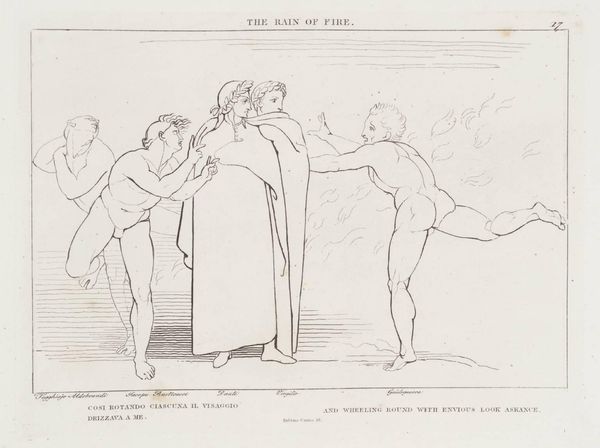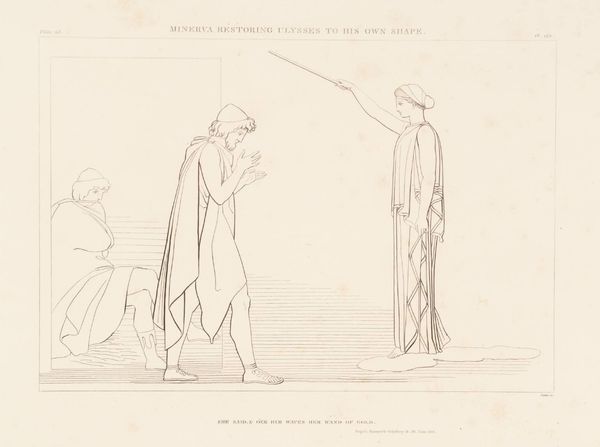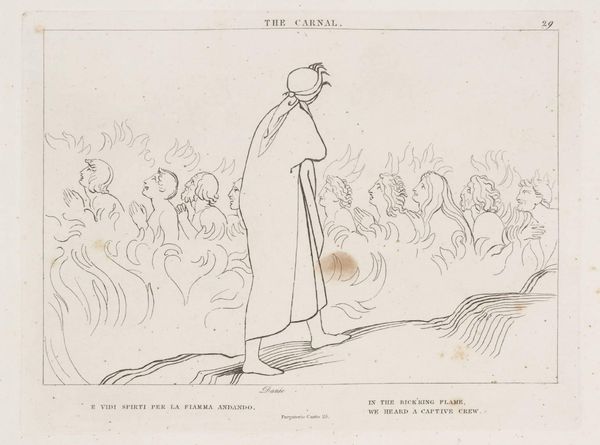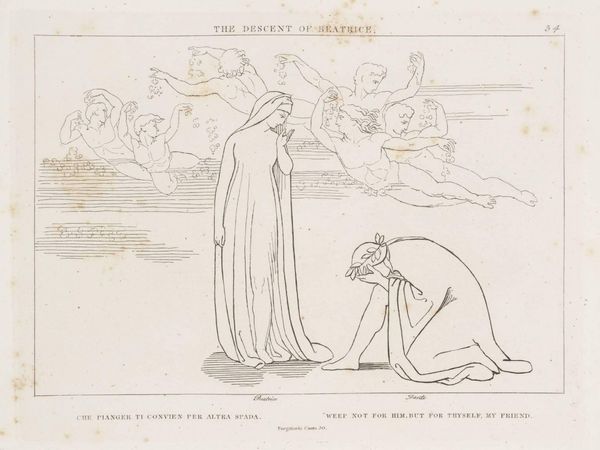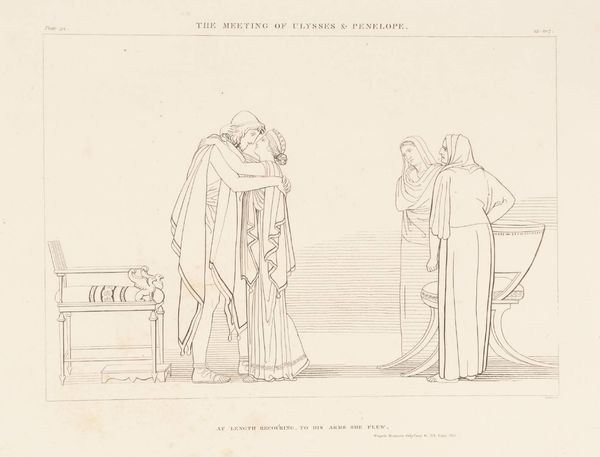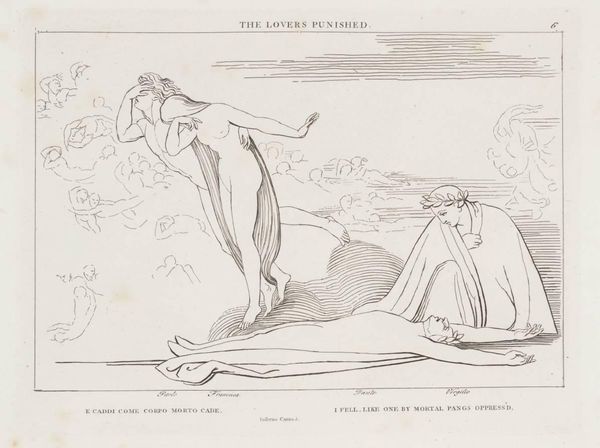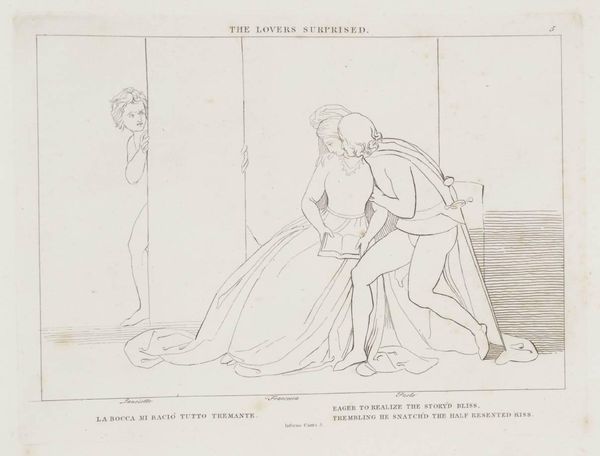
Dimensions: image: 131 x 191 mm
Copyright: CC-BY-NC-ND 4.0 DEED, Photo: Tate
Curator: This is John Flaxman's "The Frozen Lake," part of his illustrations inspired by Dante's Inferno. I find it starkly beautiful. Editor: It’s chilling, literally and figuratively. The minimal lines against the blank space amplify the sense of isolation and despair, almost like a stage setting for suffering. Curator: Flaxman often employed neoclassical aesthetics to convey complex narratives. In this illustration, the frozen lake symbolizes betrayal in Dante's hell, each frozen head representing a traitor. Editor: The heads encased in ice... it evokes the political climate of Flaxman's time, when revolutionary ideals often led to betrayal and disillusionment. Is this a commentary on the French Revolution? Curator: It could be read that way. Flaxman's work often reflected contemporary anxieties through classical lenses. The scene gains power through its connection to both the specific text and broader societal themes. Editor: Definitely. The weight of history and the fragility of human relationships are powerfully rendered here. It's a reminder of the enduring power of art to confront uncomfortable truths. Curator: Indeed, Flaxman uses the visual language of Dante to speak to universal experiences of betrayal and the coldness of the human heart.
